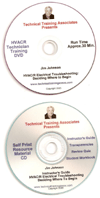Tom Perić:
The U.S. metals market has been suffering in recent years. Prices are depressed, and producers are suffering. There's been a bit of an uptick in metals pricing recently. What will be the prevailing pricing trends for 2017?
Jeffery Zappone:
2016 has been a volatile year for metals pricing. Post 2007-08, the industry remained largely suppressed overall, only showing signs of recovery within the last two to three years. However, steel, aluminum and copper – the most common metals in HVACR production – have finally risen from seven-year lows in 2016, but individually they all have risks headed into 2017.
After a rally in the first half of 2016, steel prices have given back most of their pricing recovery in the second half. Significant oversupply of 400-700 tons per year is expected to continue, as planned mills and factories come online throughout 2017. This significant amount of overcapacity will continue to plague the industry, but some demand could come from the president-elect’s promises of major infrastructure spending. This recovery would be reliant on actual levels and timeline of plans.
Aluminum and copper have had strong gains this year, albeit in different fashions. Aluminum growth has been steady YTD, posting gains of 18 percent and hitting 15-month highs in November. This has hurt costs for HVAC producers. However, they have had time to prepare and adapt during its six-month rise. Conversely, copper recently spiked 25 percent. This will have an impact on costs and eat into margins downstream through early 2017. Past the first quarter 2017 price gains are questionable – a recent poll of 22 banks showed that none thought the price trend would continue into 2017.
Perić:
Why is it important for the HVACR sector to pay attention to metals industry consolidations?
ZAPPONE:
Consolidation in the metals industry will directly affect pricing and product availability for HVACR businesses nationwide. The third quarter of 2016 saw mergers and acquisitions activity within the steel sector drop 17 percent, while deal value increased 143 percent, signaling industry consolidation is maturing. Additionally, the aluminum industry is expected to consolidate further, at an average rate of 1.4 percent over the next five years. Aluminum imports from Canada continue to rise due to lower production costs associated with hydroelectric power, pressuring U.S. producers. As the steel and aluminum industries continue to consolidate, the HVACR sector will be reliant on fewer suppliers, which could squeeze pricing, availability and product.
Additionally, many operators in the copper industry have dropped out since 2013, when prices began to fall. While the industry has seen marginal growth in the number of operators (0.8 percent over the last three years), few new facilities and operations are expected to enter the domestic market in 2017. Global copper demand is also expected to remain flat through early 2017.
Perić:
How will China's metal producing industry affect the U.S. and global markets? What will potential government trade policies do to pricing and supply? How will this affect the HVACR industry?
ZAPPONE:
Chinese demand drives the U.S. and global metals markets. China currently produces slightly over 51 percent of steel, while fulfilling the demand for 50 percent of global steel and aluminum. In recent years, China has scaled back real estate and infrastructure investments, reducing demand for steel and other metals. Falling demand and falling prices have the metals industry poised for further consolidation.
The Chinese government has continued to subsidize the production of metals, which threatens metals industries in the U.S. Subsidies and trade policies reduce U.S. metals production and downstream markets’ ability to compete. To combat dumping of excess steel and aluminum on already soft markets, many countries, including the U.S., have enacted anti-dumping duties on Chinese and other foreign-produced metals. These policies are expected to remain in place for the foreseeable future.
Perić:
What are some other factors and trends?
Zappone:
The U.S. HVACR market has grown at an average annual rate of 1.6 percent over the last five years, including 3 percent growth in 2016 alone. During this time, U.S. residential and nonresidential construction has expanded due to improving employment levels and historically low interest rates. Over the next five years, growth of ~5 percent is expected to come from continued construction activity and a resurgence in consumer spending, driving downstream demand in the food service industry.
Additionally, government regulations, tax incentives and realized savings from replacing old HVACR (14 Seer transition) systems with energy-efficient equipment have led to increased demand. Energy-efficiency expectations are expected to continue to spur sales due to the associated cost savings. However, new administrative policies that could impact the market have yet to be seen.
Also, as the country prepares for what the U.S. Energy Information Administration has forecasted - one of the longest, coldest winters in years, natural gas prices are expected to reach their highest costs since 2010. While the demand for replacement products generally increases during summer months, severe weather can often damage existing equipment; over first quarter 2017, extreme temperatures could drive demand for replacement units/sales nationwide.














